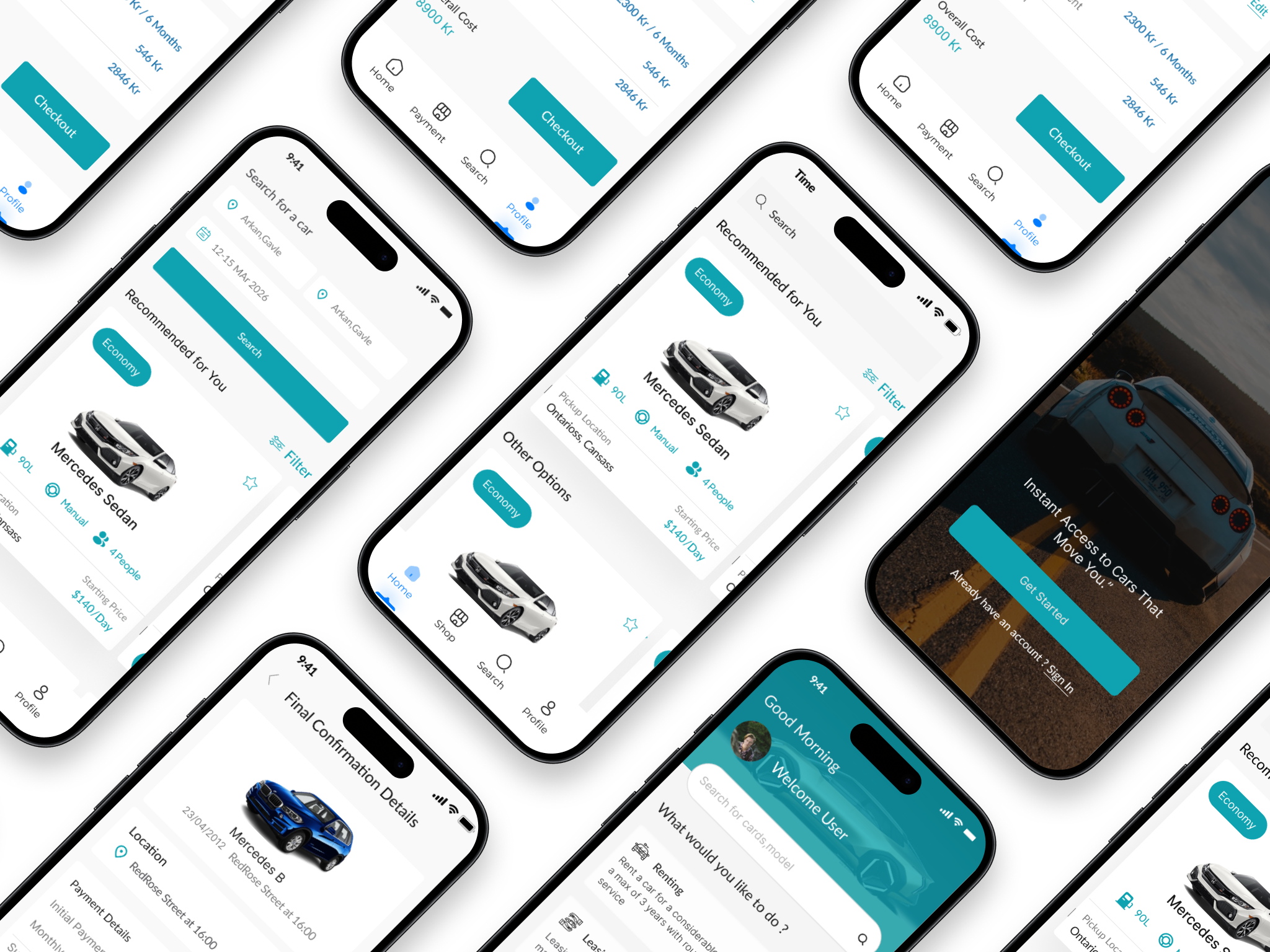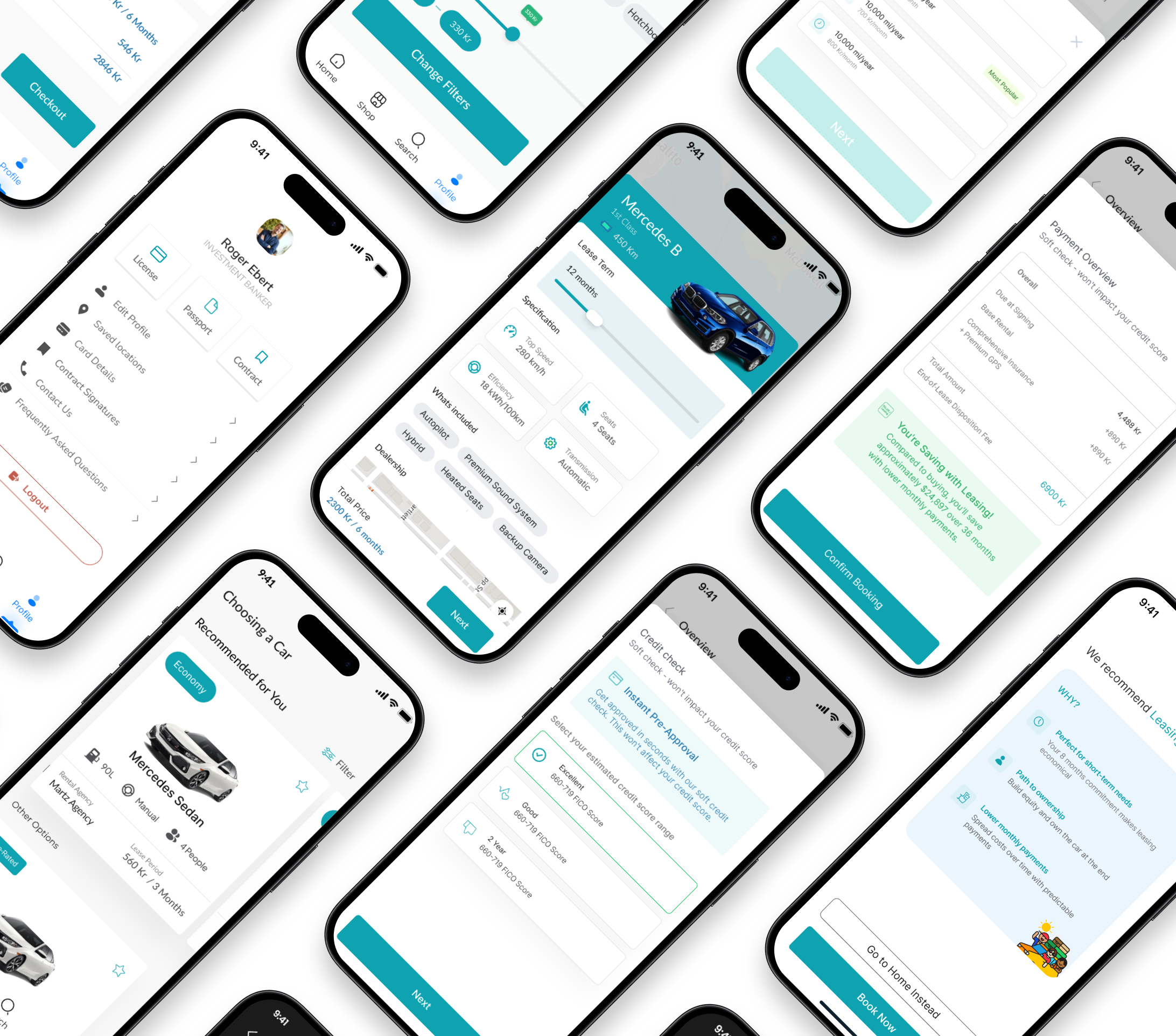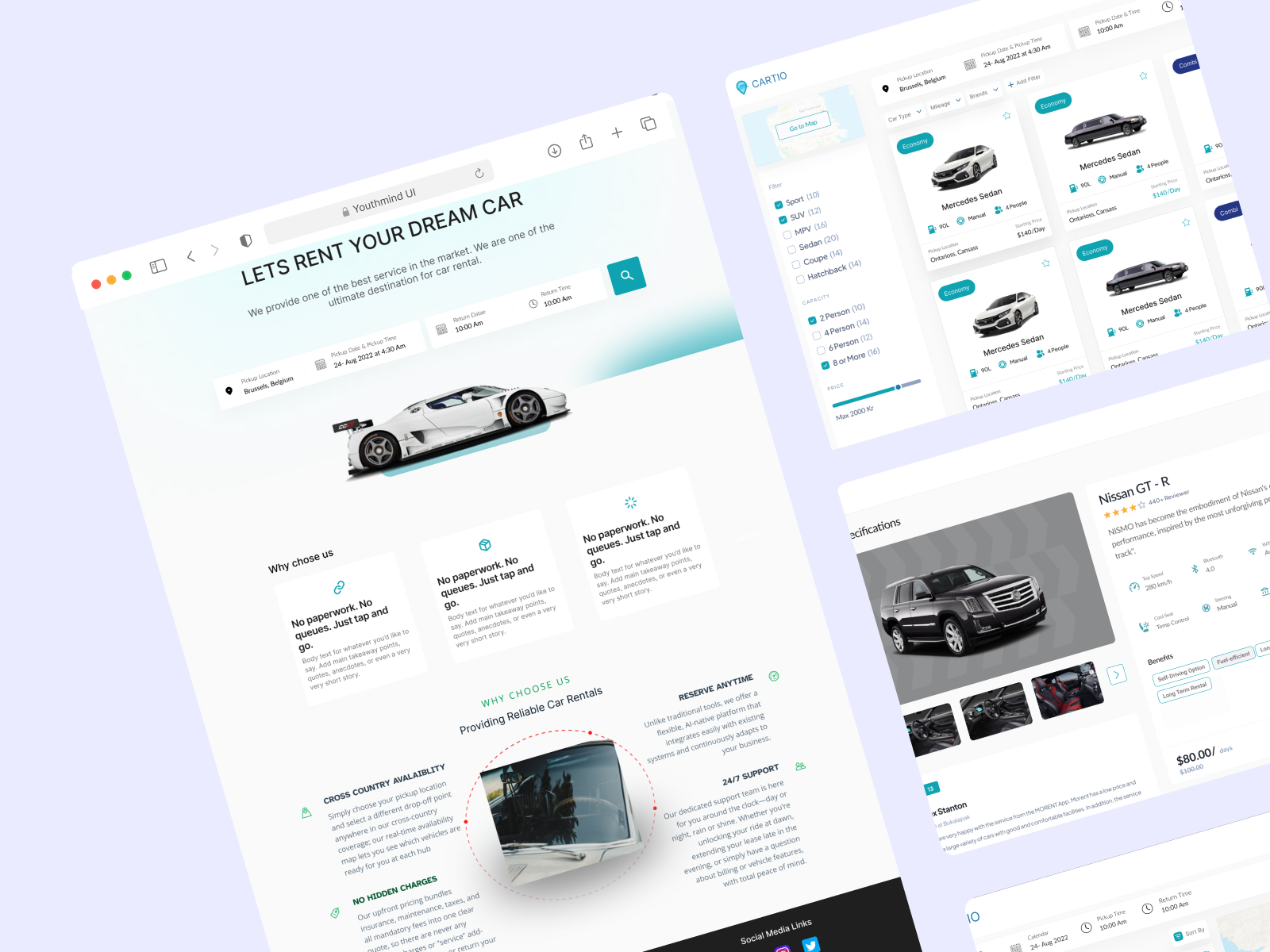BUSINESS GOAL
My Role
Platform
Cartio is an all-in-one marketplace which addresses your requirements for travel by car. Through the app, based on your usage, we provide you various options to rent or lease car services based on the user needs. The goal was to improve the experience of offering cars as a service and help provide an understanding of the benefits of diversifying your car needs in the Nordics market.


We conducted user interviews and market research alongside competitive analysis to develop our understanding of our potential customer base.
20-25% of urban residents in major Swedish cities engage with car-sharing or mobility apps at least once a year.
Active users typically book or use the service about 2–3 times per week.
Around 25–30% of app downloads convert to active bookings, and retention rates over three months tend to hover around 65–70%.
User penetration is approximately 2.1% in 2024 and is projected to rise to about 2.4% by 2029—translating to an estimated 260,000 active users.
Estimated Growth Rate of 15–20%, fueled by increasing urbanization, environmental policies, and a shift toward sustainable transportation.
The broader car rental and leasing market in Sweden is also significant, with revenues forecasted to reach roughly US$486 million by 2025.
As a result of our research, we gathered three key insights that we used to guide the project:
Car renting is preferred: Car renting is an alternative to car ownership, making driving more affordable, flexible, and resource‑efficient
Bit hesitant towards leasing: Rising living costs have made long‑term commitments less attractive. Leasing providers need more flexible terminations, shorter-duration plans, or “lease-to‑own” hybrids to retain customers
Digital Clarity: Surface all fees upfront, add contextual help for fuel policies, and streamline booking to one or two screens. Basically no hidden fees or packages.


The experience journey map was drafted to get further insight into our goals and analyse what would be a great way to move forward and what features are required to be focused on.

Carefully structured to provide an intuitive user journey, balancing educational content, interactive features, and community engagement.
Focused on creating a visually appealing and emotionally engaging experience. The design incorporated nature-inspired themes, intuitive icons, and an easy-to-navigate layout.
Special attention was given to making the app accessible to all users, including those with disabilities. Features like screen reader compatibility, color blindness modes, and scalable text were included.
Once users are onboarded, they can easily start the rental process by tapping 'Rent'. They simply enter their location, choose the dates, and browse through available vehicles with transparent pricing and options. Filters and a map assist in narrowing down choices. When a vehicle is selected, users can view detailed information and optional add-ons, with costs updating in real-time.
.Users can review pricing, choose between short-term rentals or long-term lease plans, apply discounts or insurance options, and complete payment through saved cards or digital wallets – all within a few taps. The flow emphasises clarity, trust, and flexibility, ensuring users understand costs upfront while maintaining a frictionless, conversion-optimised experience.
Users can choose between short-term rentals or long-term lease plans, apply packages or insurance options.
After launch, the goal is to monitor user engagement and app performance and develop the web application. We continue gathering feedback, leading to updates that enhance user experience and expand features.

Segment-based UX supported varied user goals: functional for commuting, exploring, corporate use, and flexible living
Flexible commitments (short leases, subscriptions, and sharing) appeal to cost-conscious markets.
UX clarity—no hidden costs, streamlined flows, elevated trust, and simplification.